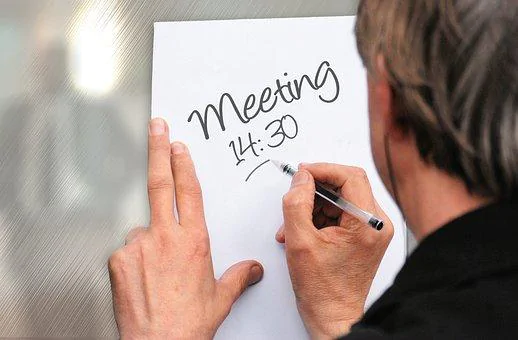From Chaos to Cohesion: Transforming Your Meetings into Productive and Engaging Sessions

Do your meetings feel more like a chaotic circus than a productive discussion? Do you leave them feeling frustrated and unfulfilled, wondering where the time went? Many people experience the pain of sitting through endless meetings that go nowhere, leaving them questioning their purpose and value.
Maybe you’re leading the meeting, trying to keep everyone on track, and struggling to corral the chaos. Or perhaps you’re a participant, feeling disengaged and disinterested, wondering why you’re even there. Either way, it’s time for a change. And that change can start with knowing how to kick off a meeting.
Although transforming your meetings from chaos to cohesion may be challenging, with the right tools and mindset, you can turn your meetings into productive and engaging sessions that leave everyone energized and accomplished.
In this article, you’ll learn some practical tips and strategies that will help you transform your meetings and encourage participation from all attendees. So if you’re ready to say goodbye to unproductive and frustrating meetings and hello to productive and engaging sessions, keep reading.
Effective Time Management

One of the most common problems with meetings is that they often run over time. This can be frustrating for attendees, especially if other commitments or meetings are scheduled immediately after the current meeting.
You can manage time effectively by setting a time limit for the meeting and sticking to it. One way to do this is by using an effective meeting checklist, which includes a specific start and end time for the meeting. This should be clearly communicated to all attendees. If the meeting is running behind schedule, cutting certain topics or discussions short may be necessary to stay on track.
Another strategy for managing time effectively is to create a detailed agenda for the meeting. This will ensure that all topics are covered within the allotted time and keep discussions focused and on track. Plus, all attendees can participate fully without feeling rushed or overwhelmed.
Engaging Attendees

Encouraging participation in a meeting can be challenging. However, meetings become more productive when everyone participates, and ideas flow more freely. Discussions are also likely to be more collaborative.
Start by asking open-ended questions. These questions invite discussion and allow attendees to share their thoughts and ideas more freely. They also stimulate discussion and get everyone involved.
You can also encourage participation by offering opportunities for feedback. This can be done by asking attendees to share their thoughts and ideas or using interactive tools such as whiteboards or online collaboration platforms.
For example, if you are holding a meeting to discuss a new product launch, ask attendees for their thoughts on the product. This will encourage participation and ensure that all viewpoints are heard. It will also help to generate new ideas and insights and build stronger relationships between attendees.
Setting Clear Goals
Setting clear goals is crucial for making meetings productive and engaging. Without goals, meetings can become chaotic and unfocused, leaving attendees frustrated and unproductive.
To set clear goals for your meeting, start by identifying the purpose of the meeting. What do you hope to achieve? What problems or challenges do you need to address? Once you have identified the purpose of the meeting, communicate it clearly to all attendees. This can be done through an agenda or email before the meeting.
In addition to communicating the purpose of the meeting, it is also essential to set specific, measurable goals for the session. For example, if the purpose of the meeting is to brainstorm ideas for a new product, a specific goal might be to generate ten new ideas within the first 30 minutes of the meeting. This provides a clear target for attendees to work towards and keeps the meeting focused.
Setting clear goals will keep your meeting on track and ensure everyone works towards a common objective. In the end, your meeting will be more productive, and the attendees will be engaged and motivated.
Ensuring Action is Taken
After the meeting is over, it’s essential to follow up. This entails ensuring action items are completed, and progress is made toward meeting goals.
One tip for ensuring action is taken is to assign tasks and set deadlines. This will keep everyone updated on what’s expected of them and ensure progress is being made. It will also ensure that everyone is clear on their responsibilities.
Another way to ensure action is taken is by sending all attendees a summary of the meeting. This can include a recap of the topics discussed, any assigned action items, and a timeline for completing those items. Following up after a meeting will ensure that everyone stays accountable for achieving the meeting goals. It will also boost productivity and increase the focus of meeting attendees.
Wrapping Up
It’s natural to feel frustrated when your valuable time is being wasted. However, that shouldn’t discourage you. Instead, it should motivate you to take action and make a change. Implementing these strategies will transform your meetings from chaotic and unproductive to cohesive and engaging. Plus, you and your colleagues will feel more motivated and satisfied with your work, leading to better outcomes.
Identify the strategies that work best for you and your team and implement them. With a little effort, you can turn your meetings into productive sessions that leave everyone feeling energized and accomplished.
Don’t let the chaos continue. Take charge and transform your meetings into something truly valuable and meaningful.



